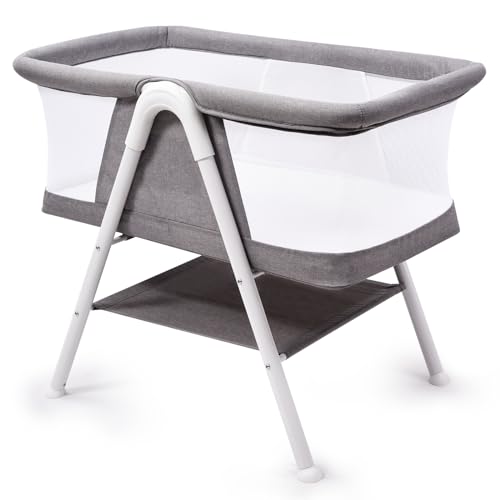The Benefits and Considerations of Bedside Sleepers for New Parents
As new parents browse the amazing and frustrating experience of welcoming a newborn, making sure a safe and comfortable sleeping arrangement becomes important. One of the ingenious solutions that have actually gained immense popularity recently is the bedside sleeper. This convenient sleeping arrangement offers numerous benefits, catering specifically to the needs of both parents and their infants. This post looks into the different features, benefits, and factors to consider of bedside sleepers, together with often asked concerns.
What is a Bedside Sleeper?
A bedside sleeper, frequently described as a co-sleeper, is a kind of crib developed to attach safely to the side of the moms and dad's bed. It enables the newborn to sleep within arm's reach while producing a separate sleep space, which is important for the baby's safety. Bedside sleepers been available in different designs, sizes, and styles, making it easy for parents to discover an appropriate one that matches their home decoration and personal choices.
Secret Features of Bedside Sleepers
Bedside sleepers normally have distinct features that set them apart from conventional cribs or bassinets. Here are some common attributes:
- Adjustable Height: Many bedside sleepers permit parents to adjust the height to match their bed, ensuring seamless access to the baby.
- Durable Safety Straps: Bedside sleepers are equipped with safety straps that secure them to the side of the adult bed, preventing accidental movement.
- Breathable Mesh Sides: Most models have mesh sides for presence and air flow, enabling parents to monitor their baby without fuss.
- Easy Access: The design permits parents to reach their baby quickly for feeding or reassuring without getting out of bed.
- Mobility: Many bedside sleepers are lightweight and easy to move, making them convenient for travel.
Advantages of Bedside Sleepers
1. Motivates Bonding
Being able to see, hear, and reach their baby easily cultivates a strong bond in between parents and infants. Bedside sleepers facilitate skin-to-skin contact, nighttime feedings, and reassuring.
2. Promotes Safe Sleep
Bedside sleepers are designed to meet security standards for infant sleeping. The separate space lowers the threats connected with co-sleeping, such as suffocation, while still enabling parents distance.
3. Easier Nighttime Feedings
Breastfeeding moms, in specific, value bedside sleepers for their benefit. Infant Bedside Cot can nurse their babies without totally waking up, which helps ease nighttime routines for both parents and infants.
4. Boosted Sleep Quality
With a bedside sleeper, parents can keep a constant eye on their infants, which can result in lower stress and anxiety and enhanced sleep quality for both celebrations.
5. Saves Space
For parents with minimal space, bedside sleepers provide a useful option. They occupy less room than standard cribs and can be safely connected to the parents' bed.
| Function | Bedside Sleeper | Standard Crib |
|---|---|---|
| Proximity to Parents | Close | Far |
| Adjustability | Yes | Generally No |
| Portability | Easy | Typically Bulky |
| Different Sleep Space | Yes | Yes |
| Security guarantees | High | High |
Considerations Before Purchasing a Bedside Sleeper
1. Security Standards
When picking a bedside sleeper, guarantee it meets security policies set by entities such as the Consumer Product Safety Commission (CPSC). Search for models with long lasting construction, secure attachments, and no poisonous products.
2. Size and Fit
Not all bedside sleepers might work with your bed. It is essential to think about the height of your bed and the size of your room to make sure the sleeper fits comfortably alongside without blocking motion.
3. Period of Use
Determine for how long you prepare to use the bedside sleeper. A lot of designs can accommodate infants up until they can stay up unassisted or reach specific weight limits. Confirm that the item is developed for your desired use duration.
4. Relieve of Cleaning
Infants can be messy, so think about how easy it is to clean the bedside sleeper. Look for products that are washable or have detachable covers for benefit.
5. Budget
Prices for bedside sleepers differ substantially based upon design and brand. Set a budget before shopping, remembering that higher-cost products often feature much better safety features and durability.
Frequently Asked Questions About Bedside Sleepers
Q1: Is it safe to use a bedside sleeper?
A1: Yes, when utilized properly and according to the maker's instructions, bedside sleepers are normally safe for infants, offering a different sleeping space close to the parents.
Q2: How long can I use a bedside sleeper?
A2: Most bedside sleepers can be used till the baby is about 5-6 months old or when they can roll over, push up, or sit unassisted. Constantly describe the weight and security limits specified by the producer.
Q3: Can I use a bedside sleeper with a king-size bed?
A3: Many bedside sleepers are adjustable and can be used with king-size beds, however it's necessary to examine the requirements before purchasing.
Q4: How do I clean up a bedside sleeper?
A4: Cleaning directions vary by design, however many have removable and machine-washable covers. Constantly check the manufacturer's suggestions for appropriate care.
Q5: Are bedside sleepers pricey?
A5: The rate of bedside sleepers can vary widely, normally falling between ₤ 100 to ₤ 300, depending upon functions and brand name. It's advisable to stabilize quality and price.
Bedside sleepers provide various benefits for new parents, offering a safe and convenient sleeping choice that promotes bonding during the early months of a baby's life. With careful consideration of security standards, size, and ease of use, parents can choose the ideal bedside sleeper to make sure a peaceful night for both themselves and their infant. By understanding the advantages and possible downsides, new parents can make better-informed choices that fit their way of life and household requirements, paving the method for a smoother transition into being a parent.

